
Roots
The story of textured beauty, especially for those with Black and mixed-race heritage, is a deep, abiding one, etched into the very fiber of identity. It’s a narrative not confined to recent memory, but rather a profound echo from ancient lands, a living archive passed down through generations. The natural hair movement, in its contemporary expression, did not simply appear; it awakened a dormant consciousness, urging a collective remembrance of what was, for too long, deemed less than ideal.
This reawakening shifted perceptions, yes, but more significantly, it repatriated a profound connection to self, community, and the ancestral wisdom held within each curl and coil. We begin by unearthing the very foundations of textured hair, exploring its elemental biology and how its unique characteristics carry the imprint of our deep past.
Consider the intricate architecture of a single strand. From a scientific standpoint, human hair is composed primarily of a protein called Keratin, growing from follicles embedded beneath the skin. These follicles, varying in shape, influence the curl pattern ❉ rounder follicles tend to produce straight hair, while increasingly oval or elliptical shapes yield waves, curls, and the tightly coiled spirals of Afro-textured hair. This biological reality, often studied in laboratories, also whispers tales of resilience forged over millennia.
Early human ancestors on the African continent, facing intense solar radiation, developed Afro-textured hair as an adaptive shield, its spiraled structure and wider follicular patterns allowing for air circulation and protection from harsh UV rays. This elemental biology is a first principle of our shared hair heritage .
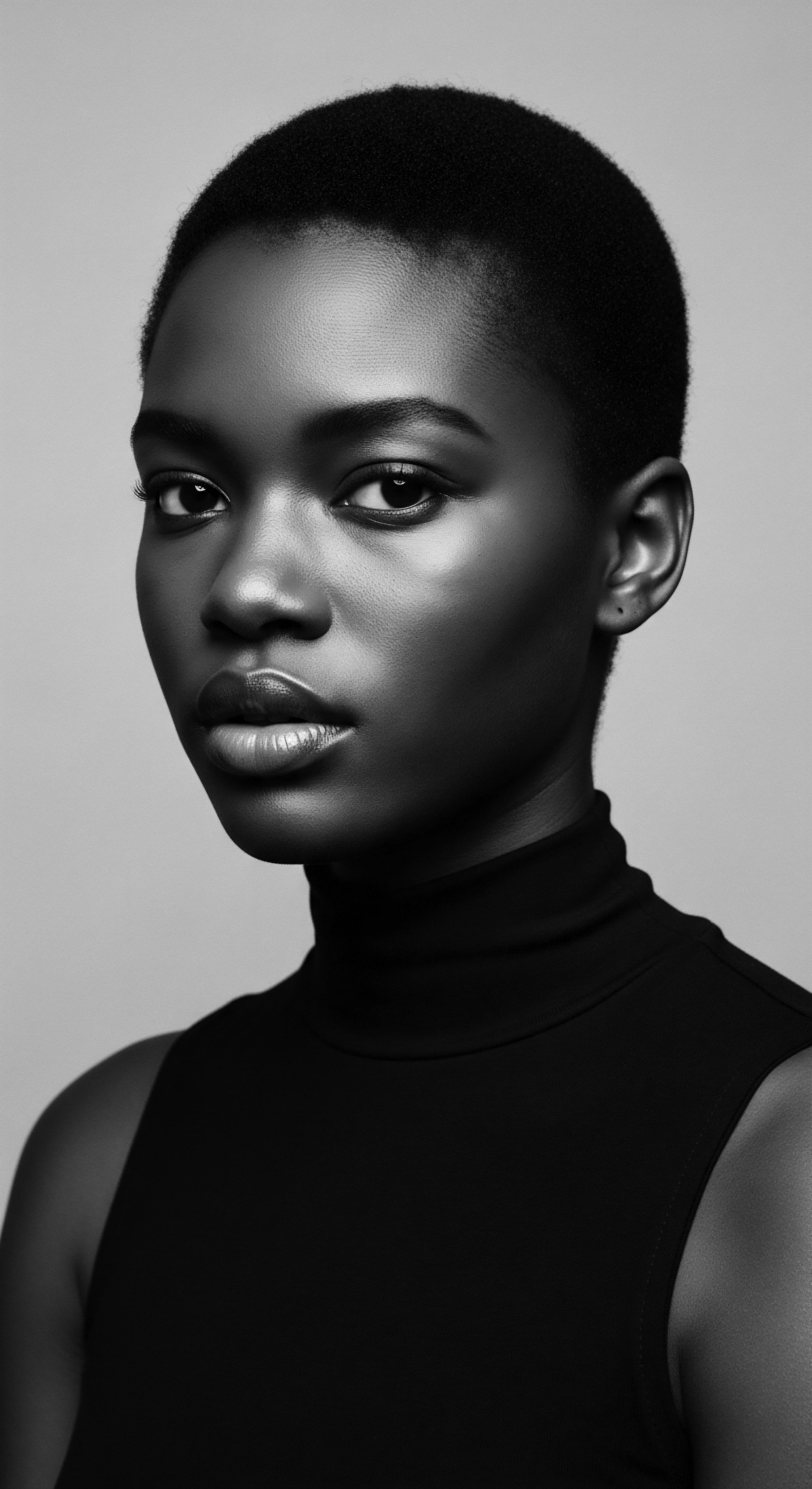
What Is the Ancestral Blueprint of Textured Hair?
Beyond anatomical descriptions, the essence of textured hair finds its blueprint in the very environments that shaped human existence. In ancient African societies, hair was far more than a biological outgrowth; it was a living canvas, a cultural marker, and a conduit for spiritual connection. Hairstyles conveyed a wealth of information ❉ one’s tribe, age, marital status, social rank, wealth, and even occupation. Complex braiding patterns, intricate twists, and elaborate adornments communicated social standing and celebrated communal identity.
This societal coding of hair illustrates a profound understanding of the strand’s inherent expressive power, a wisdom born of close observation and intergenerational transmission. The notion of a universal beauty standard was absent; instead, beauty was celebrated in its diverse forms, each texture and style holding a specific cultural resonance.
The natural hair movement revived ancestral wisdom, transforming perceptions of beauty by reconnecting individuals with the deep heritage woven into every curl and coil.
The colonial period, unfortunately, disrupted this rich understanding. European beauty ideals, rooted in concepts of straight hair, began to be imposed, subtly at first, then aggressively, linking hair texture to social acceptance and even survival. This historical shift created a chasm, forcing many to chemically alter their hair to conform, leading to generations of dissociation from their natural textures.
The idea of “good hair” versus “bad hair” entered the lexicon, directly tied to how closely one’s hair mimicked Eurocentric straightness. The modern natural hair movement, in its reclamation, consciously works to dismantle these imposed biases, returning to the pre-colonial understanding where hair was revered in its natural state.

How Does Hair Classification Connect to Our Past?
Contemporary hair classification systems, while attempting to categorize texture, often fall short of capturing the true diversity and historical context of textured hair. While some systems numerically grade curl patterns (from wavy to coily), they risk oversimplifying a complex reality. Historically, the language around textured hair was embedded in cultural practices, not scientific diagrams. Terms passed down within families and communities spoke to the feel, the responsiveness, and the cultural meaning of hair.
- Kinky ❉ Often used to describe tightly coiled hair, reflecting its zig-zag or S-shaped pattern. This term, once weaponized, has been reclaimed by the movement.
- Coily ❉ Refers to hair that forms very small, tight curls, often shrinking significantly from its actual length.
- Afro-Textured ❉ An overarching term for hair that grows in a tight, often dense spiral pattern, historically common among people of African descent.
- Protective Styles ❉ Traditional methods of styling, like braids and locs, that shield hair from environmental damage and manipulation, passed down through generations.
These are not merely scientific descriptors; they are echoes of identity, carrying the weight of shared experiences and collective memory. The movement has seen a reclamation of these terms, transforming them from markers of perceived “otherness” to celebrations of unique beauty and heritage .
| Historical Lens (Pre-Colonial Africa) Hair as a map of social status, tribal affiliation, and spiritual connection. |
| Modern Lens (Post-Natural Hair Movement) Hair as a spectrum of curl patterns (Type 3A-4C), porosity, and density. |
| Historical Lens (Pre-Colonial Africa) Styling as a communal ritual, a reflection of life events and ancestral ties. |
| Modern Lens (Post-Natural Hair Movement) Styling as an expression of personal identity, often connecting to heritage with scientific understanding. |
| Historical Lens (Pre-Colonial Africa) Emphasis on natural ingredients for health and symbolism. |
| Modern Lens (Post-Natural Hair Movement) Emphasis on product formulations, understanding chemical bonds and moisture retention for healthy hair. |
| Historical Lens (Pre-Colonial Africa) The natural hair movement has encouraged a return to celebrating diverse textures while also embracing scientific knowledge for optimal care. |
The natural hair movement, therefore, is a profound societal shift. It prompted individuals to look past external pressures and deeply understand the biological and historical roots of their textured hair. This understanding serves as a powerful antidote to generations of imposed beauty standards, reminding everyone of the inherent beauty and strength residing in every strand, a beauty rooted in heritage itself.
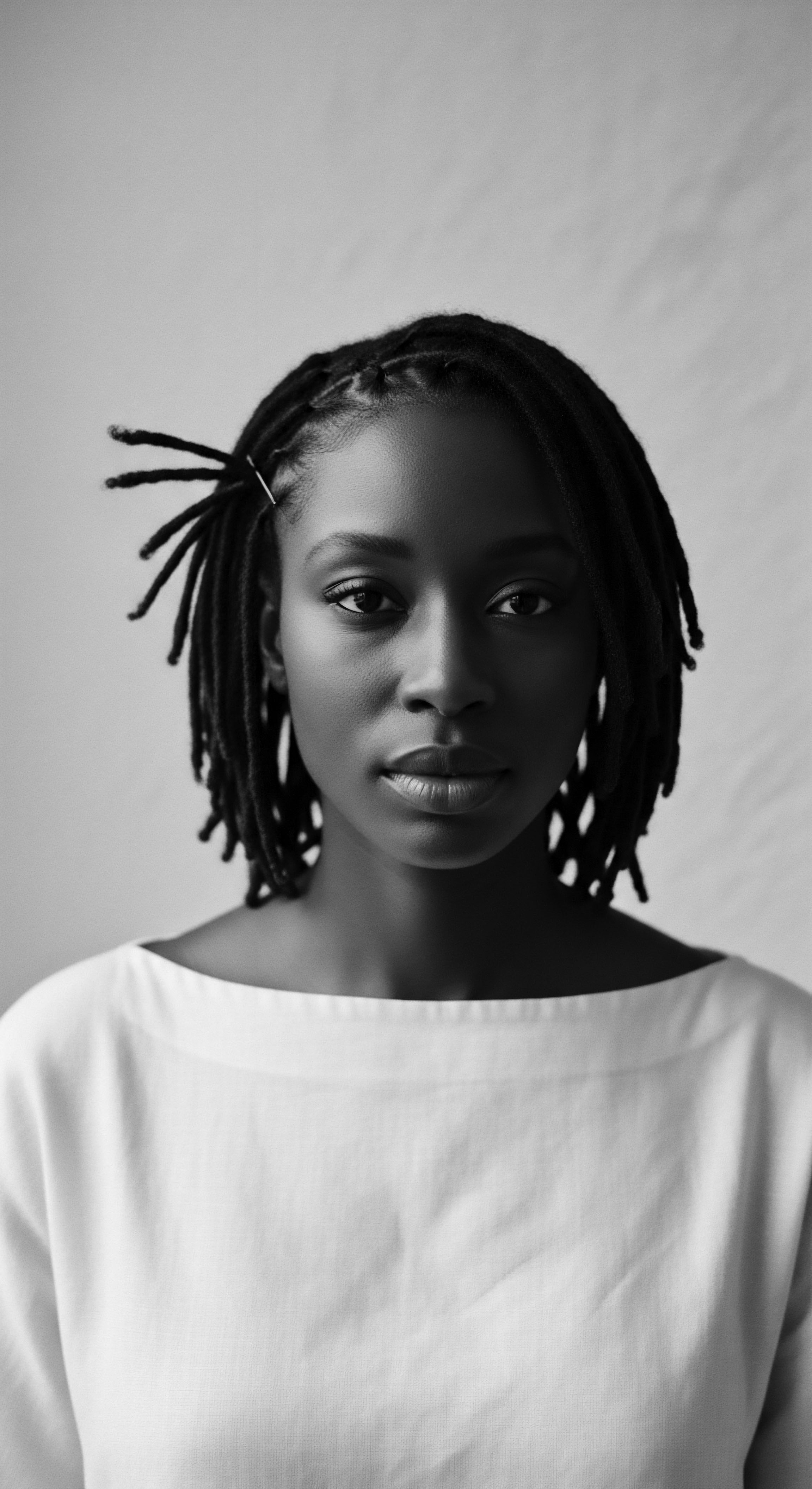
Ritual
From the very structure of a strand, we journey into the living practices that have shaped and celebrated textured hair through the ages. The natural hair movement, in its contemporary resurgence, did not simply advocate for wearing hair in its untouched state; it ignited a rediscovery of rituals—the ancient techniques, the intentional tools, and the transformative power of styling that has been a cornerstone of Black and mixed-race heritage for millennia. These practices, once relegated to private spaces or viewed through a lens of exoticism, now stand proudly as expressions of autonomy, artistry, and connection to a rich ancestral past.
Hair styling, for many cultures across the African diaspora, was never a mere cosmetic act. It was a language, a form of non-verbal communication, and a communal experience. Consider the enduring legacy of protective styling . These techniques, designed to shield delicate hair from environmental aggressors, breakage, and excessive manipulation, have roots stretching back to ancient African civilizations.
Braids, cornrows, and twists, for instance, were not simply decorative; they symbolized status, communicated messages about age or readiness for marriage, and often served as spiritual connections. These styles allowed for growth and preservation, a testament to an ancestral understanding of hair health.
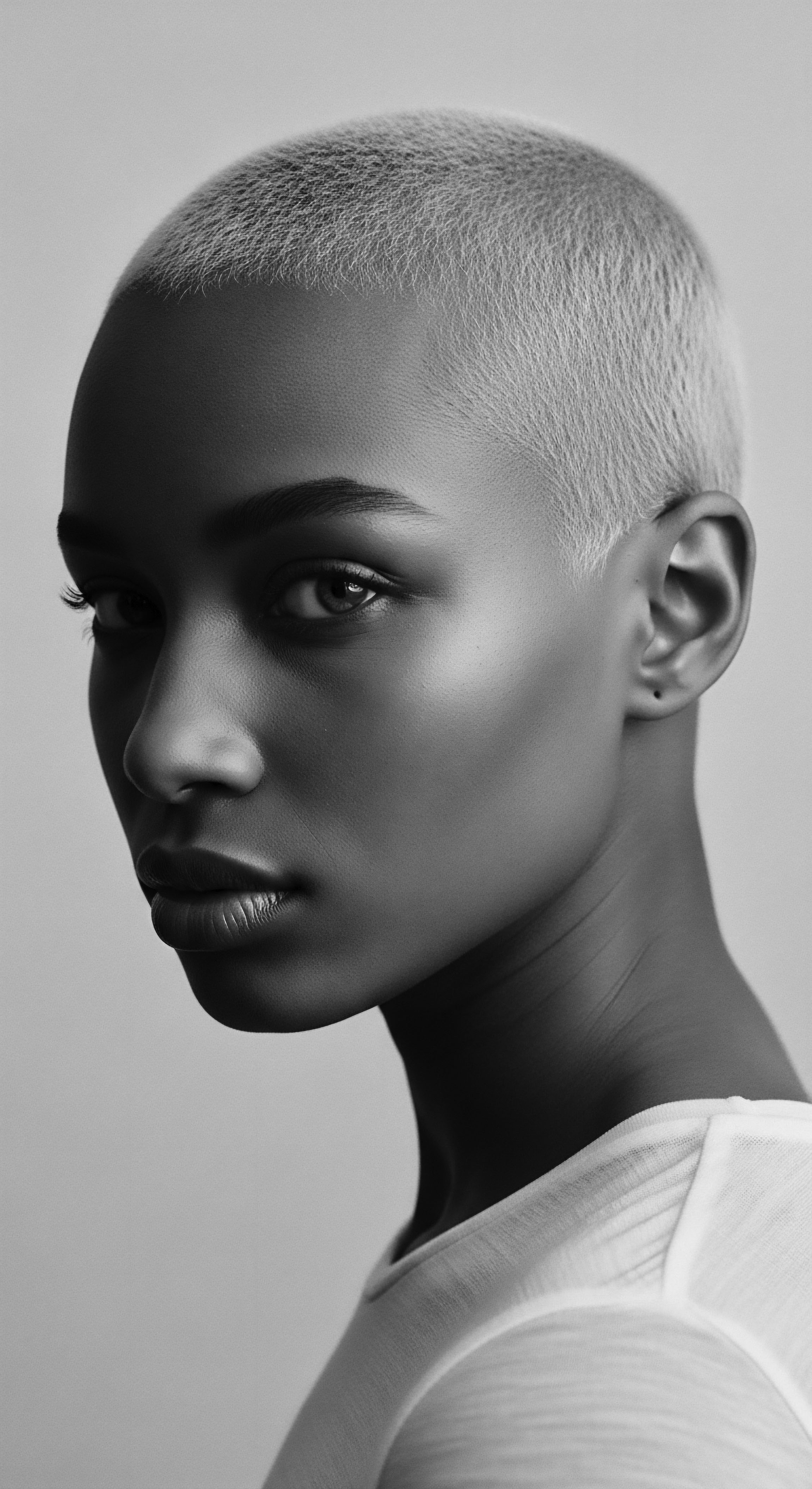
How Does Protective Styling Echo Ancestral Wisdom?
The art of protective styling, as practiced within the natural hair movement, is a direct lineage to these ancient ways. Techniques like box braids , Cornrows, and locs are not recent inventions; they are a continuation of methods passed down through families, taught from elder to younger. For instance, the intricate patterns of cornrows, often called cane rows in some Caribbean communities, reflect the agricultural practices of planting crops in rows, a subtle yet profound connection to land and sustenance.
Locs, a hairstyle deeply embedded in spiritual practices for various African communities and later popularized by Rastafarianism, represent a conscious rejection of Eurocentric norms, symbolizing spiritual journeys and natural growth. These styles speak to a cyclical understanding of care and beauty, where hair is allowed to rest, gather strength, and embody natural forms.
Styling textured hair is a living archive, where each braid and twist tells a story of cultural legacy, communal practices, and personal expression.
The natural hair movement brought these styles from the margins to the mainstream, fostering a collective appreciation for their versatility and historical weight. This shift created space for widespread adoption, but also prompted conversations about cultural appropriation versus appreciation. Understanding the origins and significance of these styles ensures they are honored, not merely copied, preserving their deep heritage .
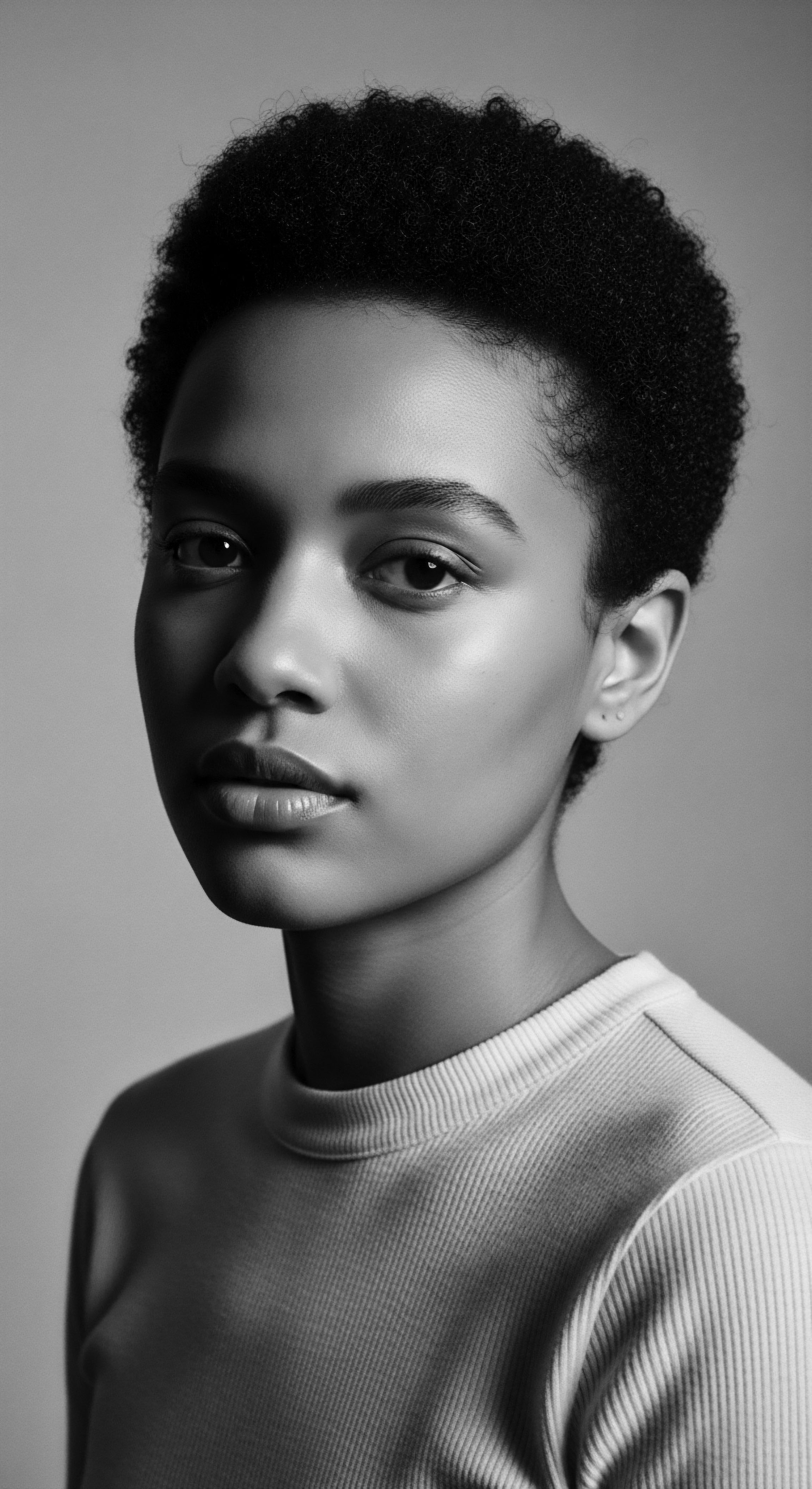
What Tools and Techniques Honor Hair’s Natural Form?
The tools and techniques employed within textured hair styling also bear the mark of heritage . While modern innovations bring ergonomic brushes and advanced heat protectants, the core principles of care often mirror ancestral methods.
- Combs and Picks ❉ Traditional African combs, often carved from wood or bone, were designed to navigate coils without causing damage, reflecting an intuitive understanding of hair structure. The Afro pick, a tool for shaping and lifting the Afro, became a symbol of Black power during the Civil Rights Era, representing a tangible connection to Afrocentric aesthetics .
- Fingers as Tools ❉ Many traditional styling methods relied heavily on manual dexterity. Techniques like finger coiling, knotting, and twisting are deeply rooted in practices where hands were the primary tools, allowing for a sensitive interaction with the hair’s natural pattern. This gentle touch speaks to a holistic approach to hair care.
- Natural Adornments ❉ Beads, cowrie shells, and various fabrics were used historically to adorn and protect hair, often signifying social status, tribal identity, or spiritual beliefs. The movement encouraged the re-adoption of these elements, connecting contemporary styles to ancient forms of self-expression.
The transition away from chemical relaxers, a dominant practice for generations seeking to achieve straightened hair, was a significant aspect of the movement. This chemical process, while offering a semblance of conformity to mainstream beauty standards, often came at the cost of hair health, leading to breakage and scalp damage. The movement advocated for transitioning, a process where chemically altered hair is gradually cut away as natural texture grows out, or a “big chop,” a more immediate removal of all relaxed hair. This choice was not merely cosmetic; it represented a profound act of self-reclamation, a shedding of imposed norms and a return to inherent identity.
Even in the realm of heat styling, the movement spurred a re-evaluation. While ancestral methods sometimes involved heated tools for temporary straightening, the understanding was often paired with nourishing preparations. The movement prompted a shift toward minimal heat application, prioritizing the preservation of natural curl patterns and hair health over temporary alteration. This balanced approach acknowledges both the practicality of certain styling methods and the paramount importance of maintaining hair’s structural integrity, drawing a line between occasional use and routine damage.
The re-emergence of natural styling is a powerful demonstration of how the natural hair movement reshaped perceptions. It moved beyond a surface-level appreciation of diverse appearances to a deep reverence for the historical context, the cultural artistry, and the personal journeys tied to textured hair. This deep respect for Textured Hair Heritage transformed daily grooming into a ritual of self-love and cultural affirmation.

Relay
The impact of the natural hair movement extends far beyond individual choices about styling. It represents a profound cultural relay, a transmission of knowledge, pride, and resistance that has fundamentally reshaped perceptions of textured beauty within society at large. This shift, rooted deeply in Textured Hair Heritage , has challenged established norms, spurred economic transformations, and ignited legal battles, all while fostering a renewed sense of collective identity for Black and mixed-race individuals. This section delves into the intricate mechanisms of this societal relay, examining its historical antecedents, its economic ramifications, and the ongoing struggle for universal acceptance.
To truly grasp the movement’s transformative power, one must acknowledge its historical lineage. The current natural hair movement, largely taking hold in the 2000s, stands as a powerful second wave, building upon the foundations laid by the “Black Is Beautiful” movement of the 1960s and 1970s Civil Rights and Black Power eras. During that earlier period, the Afro hairstyle became a potent symbol of Black pride and a defiant rejection of Eurocentric beauty standards.
Figures like Angela Davis sporting an Afro signaled a political statement, directly linking hair to identity and a broader demand for racial justice. While the initial wave was deeply political, the contemporary movement, fueled by social media, has broadened its reach, focusing on self-acceptance and a redefinition of beauty, making natural hair more socially acceptable for a wider demographic.
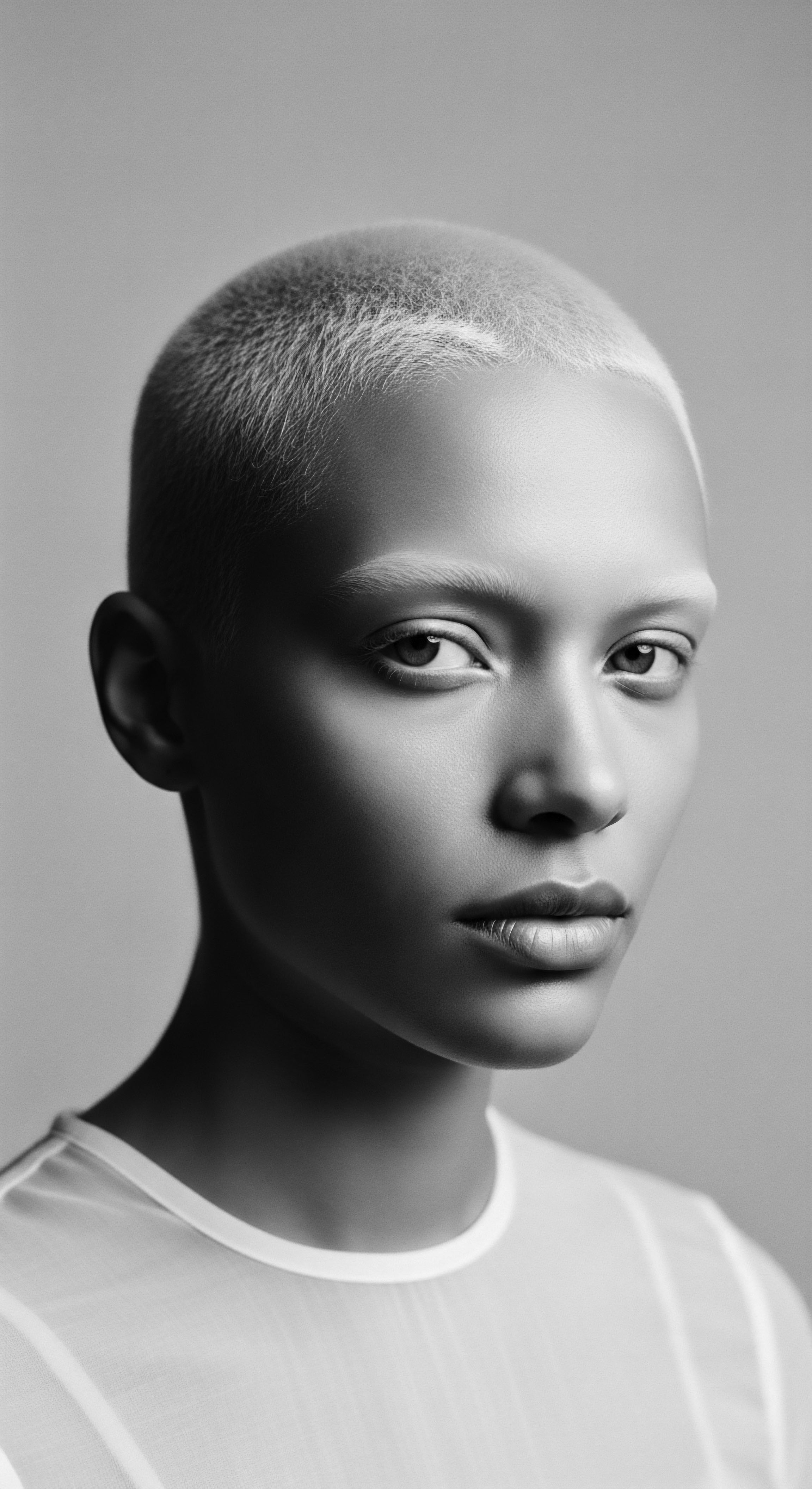
How Did Social Media Become a Catalyst for Heritage Reclamation?
The advent of digital platforms, particularly YouTube and Instagram, played a decisive role in the movement’s rapid spread and deepening impact. These platforms created virtual communities where individuals could share their hair journeys, exchange styling tips, and offer support, breaking down geographical barriers and fostering a sense of solidarity. This online ecosystem became a living library of ancestral knowledge , re-contextualized for modern times. Women, often marginalized by mainstream beauty narratives, found spaces to celebrate their diverse textures, moving away from the past stigma where tighter coils were deemed “bad hair”.
The contemporary natural hair movement, amplified by digital spaces, became a powerful relay of ancestral knowledge, challenging prevailing beauty standards and fostering collective pride.
This digital relay also had tangible economic consequences. As more individuals embraced their natural hair, demand for chemical relaxers plummeted, experiencing a significant decline of over 30% between 2011 and 2016. Conversely, sales of natural hair care products—such as styling gels, curl creams, and conditioners—saw a substantial rise. By 2015, styling products alone constituted 35% of Black hair care sales, a marked increase from 16% of the total hair care market.
This market shift stimulated the growth of Black-owned businesses, creating new avenues for economic empowerment within the community and signaling a demand for products formulated with textured hair’s unique properties in mind. The black hair industry is valued at around $2.5 billion, with Black entrepreneurs significantly contributing to its growth, indicating a shift in control over a market historically dominated by non-Black entities.
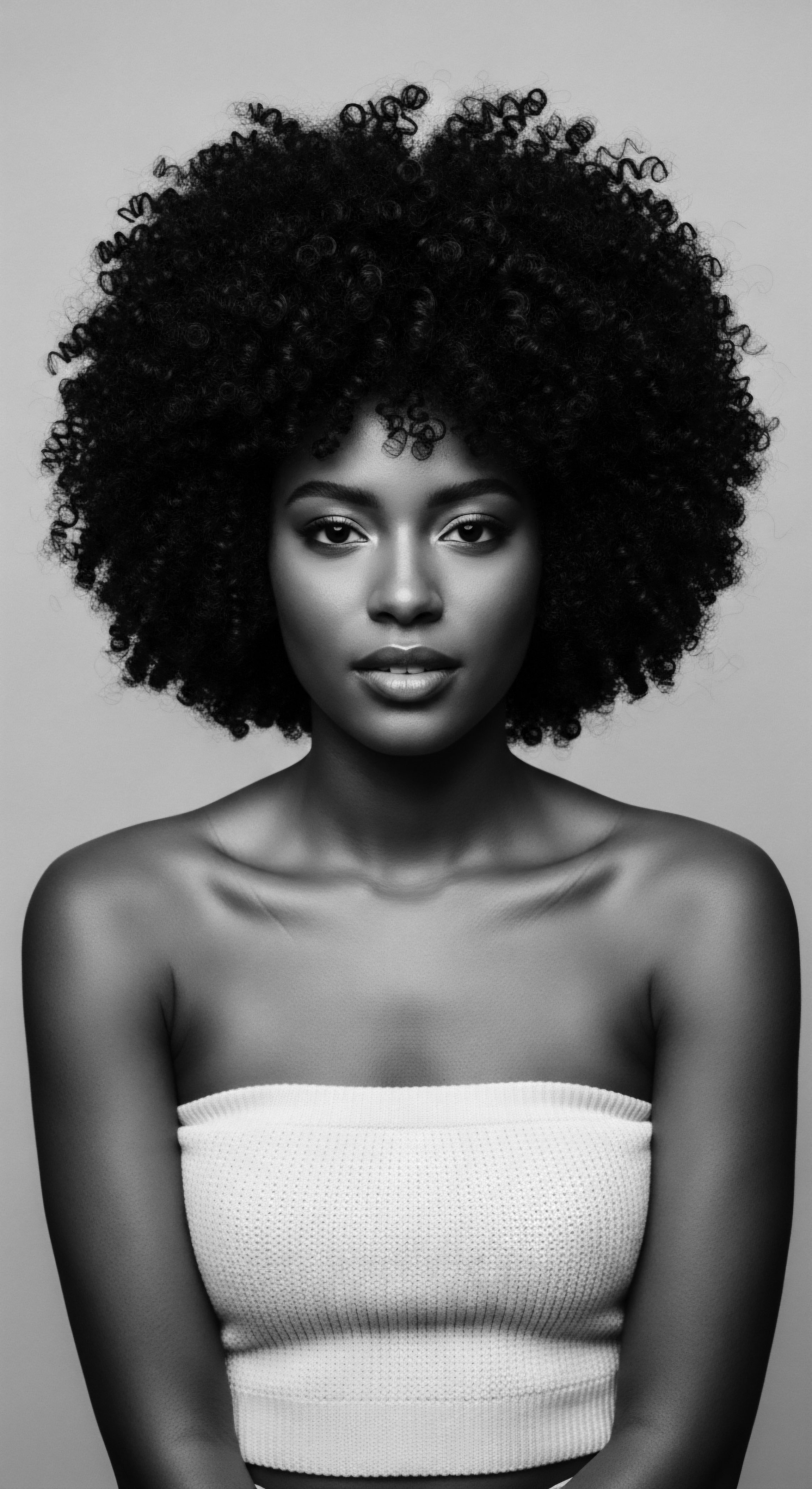
What Legal Protections Acknowledge Textured Hair as Heritage?
The societal shift in perception, however, has not been without struggle. Despite growing acceptance, anti-Black hair discrimination persists in various sectors, from schools to workplaces. This ongoing challenge underscores the deep-seated biases that still equate natural Black hair with unprofessionalism or unruliness.
A significant legal response to this discrimination is the CROWN Act (Creating a Respectful and Open World for Natural Hair). This legislation prohibits race-based hair discrimination, recognizing natural hairstyles like braids, locs, Bantu knots, and Afros as integral to racial and cultural identity. California led the way, becoming the first state to ban such discrimination in 2019, followed by numerous other states and local jurisdictions. The act aims to clarify that discrimination based on hair texture and culturally significant hairstyles is prohibited under existing anti-discrimination laws, like Title VII of the Civil Rights Act of 1964.
A compelling case study demonstrating the continued relevance of the CROWN Act and the ongoing fight for acceptance is the experience of Darryl George, a Black high school student in Texas. In 2023, George faced repeated in-school suspensions because his natural locs, which he wore pulled up, were deemed to violate the school district’s dress code, exceeding length limits for male students. His legal battle against the school district, superintendent, and even state officials, citing violations of the state’s CROWN Act, brought national attention to how seemingly neutral policies can disproportionately impact Black students’ right to wear their natural hair. While a federal judge dismissed most of George’s claims, his case highlighted the persistent need for clear legal protections that affirm hair as a component of racial heritage , rather than merely a style choice subject to arbitrary rules.
This instance, along with others such as Jeffrey Thornton’s lawsuit in California challenging a job denial over locs, brings the historical legacy of hair discrimination into sharp contemporary focus. These legal battles underscore that for many, embracing natural hair is not a fleeting trend; it is a fundamental act of self-affirmation and a reclaiming of ancestral identity in a world that often seeks to diminish it.
The natural hair movement has fundamentally reshaped perceptions by forcing a societal reckoning with historical biases and demanding recognition of textured hair as a symbol of beauty, professionalism, and profound heritage . This ongoing relay of cultural affirmation is a testament to the resilience and determination of communities reclaiming their narratives, one strand at a time.
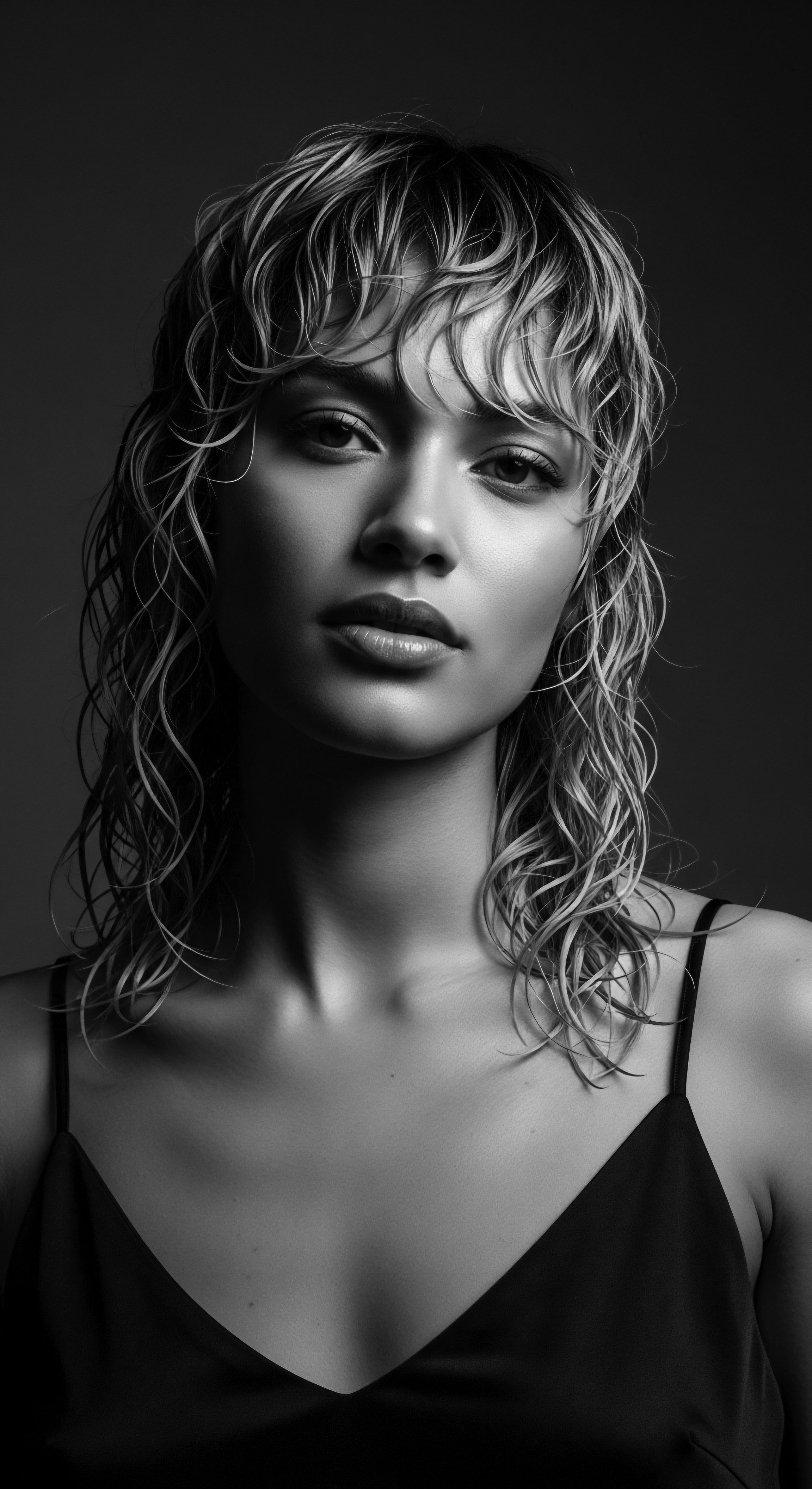
Reflection
The journey through the natural hair movement’s impact on perceptions of textured beauty reveals a truth far more expansive than surface aesthetics. It is a profound meditation on Textured Hair Heritage , a living, breathing archive of resilience, wisdom, and self-definition. From the molecular architecture of the coil to the communal rituals of styling, and through the societal shifts that have challenged discriminatory norms, each strand tells a story. This story is an echo from the source, a tender thread connecting us to ancestral practices, and an unbound helix continuously shaping futures.
Roothea’s very spirit lies in this understanding ❉ that hair is not merely a physical attribute; it is a profound extension of self, deeply interwoven with cultural memory and the legacies of those who came before us. The movement did not invent the beauty of textured hair; it reminded a world that had forgotten—or perhaps, had deliberately suppressed—its inherent splendor. It sparked a widespread awakening to the reality that beauty is not monolithic, that it thrives in diversity, and that the unique characteristics of Afro-textured and mixed-race hair are sources of strength and pride.
This re-centering of heritage has fostered a space where individuals can explore their hair’s natural form without apology or compromise. It has given rise to a community of care rooted in ancestral wisdom, where ingredients passed down through generations are valued alongside modern scientific understanding. The quiet confidence found in wearing one’s true texture, the joy of sharing styling techniques learned from kin, the collective strength in advocating for legal protection against discrimination—these are the continuing legacies of a movement that transformed personal perceptions into a powerful societal statement. The perceptions of textured beauty are forever changed, not just because more people wear their hair naturally, but because the very definition of beauty has expanded to reverently include the enduring heritage of every unique strand.
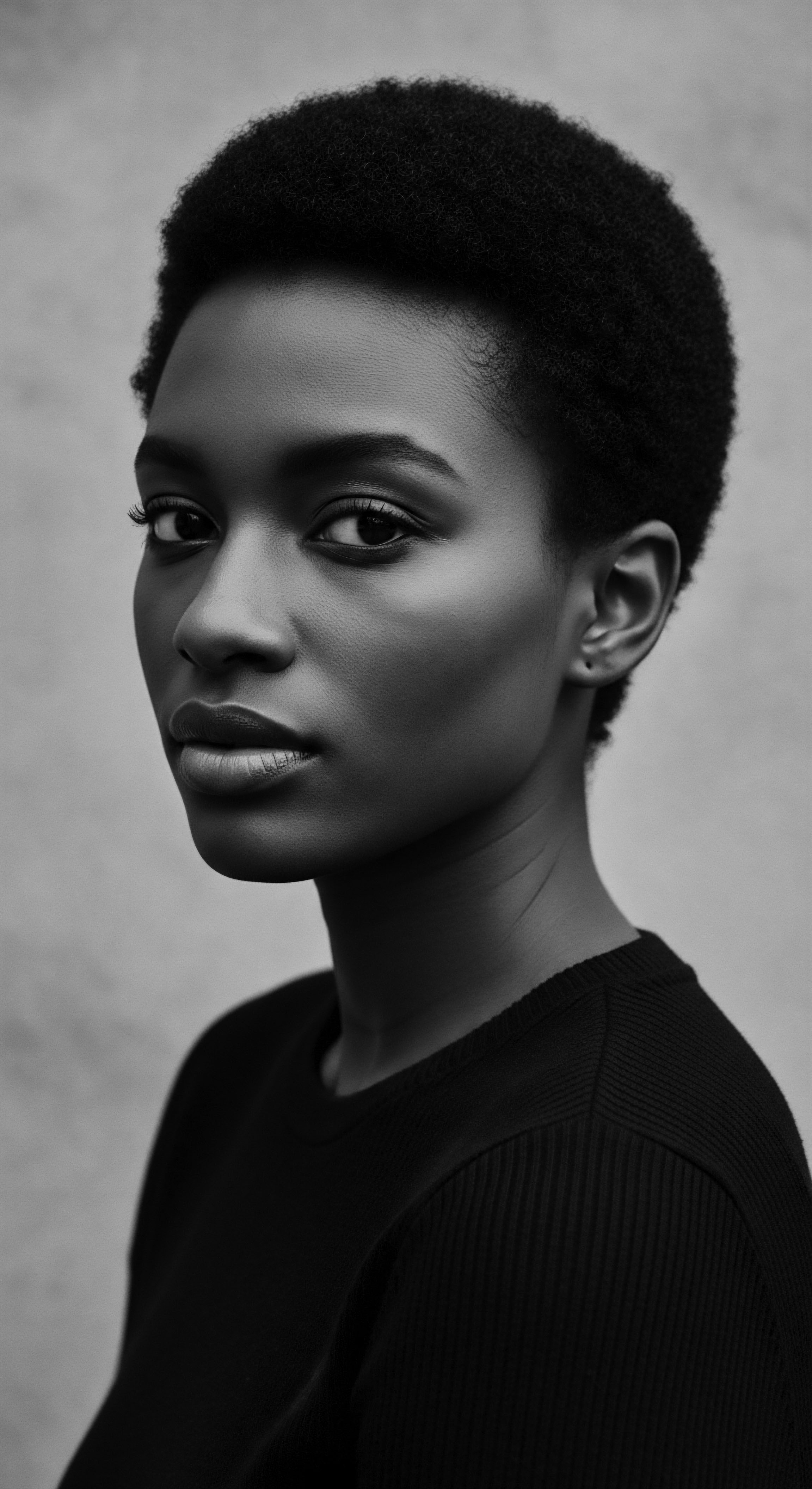
References
- Bédinadé, D. (2022). Afro hair and “the natural hair movement” ❉ a reappropriated gesture? Ethnologie française, 52(1), 18-35.
- Byrd, A. & Tharps, L. (2001). Hair Story ❉ Untangling the Roots of Black Hair in America. St. Martin’s Press.
- Dabiri, E. (2019). Twisted ❉ The Tangled History of Black Hair Culture. Harper Perennial.
- Ellington, T. (2022). Black Hair in a White World. The Kent State University Press.
- Johnson, T. A. & Bankhead, T. (2014). Hair It Is ❉ Examining the Experiences of Black Women with Natural Hair. Open Journal of Social Sciences, 2, 86-100.
- LaMar, K. L. & Rolle, H. N. (2020). How Media Influence about Hair Texture Impacts Internalized Racial Oppression and Why The Crown Act Simultaneously Promotes. Journal of Psychology & Behavioral Science, 8(1), 1-13.
- Lukate, J. (2023). The hair affair! Detangling hair discrimination. Tavistock Training.
- Mintel. (2015, December 17). Natural hair movement drives sales of styling products in US black haircare market.
- Patton, T. O. (2006). Hey Girl, Am I More than My Hair? ❉ African American Women and Their Struggles with Beauty, Body Image, and Hair. NWSA Journal, 18, 24-51.
- Sivasothy, A. D. (2011). The Science of Black Hair ❉ A Comprehensive Guide to Textured Hair Care. Sivasothy Publishing.
- Wanjiru, A. (2017). It Is More than Just Hair ❉ The Importance of the Natural Hair Movement. Face2Face Africa.
